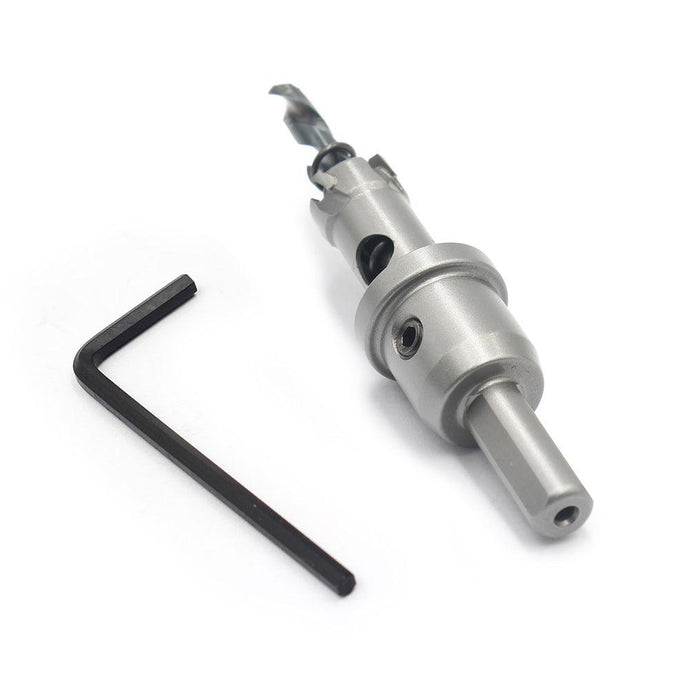Unveiling the Purpose of a Hole Saw: The Essential Tool for Precision Cutting
In the realm of woodworking, construction, and metalworking, the hole saw is a versatile and indispensable tool. Designed specifically for creating circular holes in a variety of materials, its unique construction and functionality set it apart from other cutting devices. Understanding the purpose of a hole saw not only highlights its importance but also elucidates how it can streamline projects, enhance efficiency, and produce precise results.
The primary purpose of a hole saw is to cut clean, round holes in materials such as wood, metal, plastic, and drywall. This capability is crucial for a wide range of applications, from installing electrical fixtures and plumbing to crafting furniture and architectural elements. The design of a hole saw consists of a cylindrical metal body with serrated edges, resembling a small saw blade. It attaches to a drill, allowing the user to create holes of varying diameters quickly and accurately.
One of the most common applications for hole saws is in the installation of electrical outlets and light fixtures. When remodeling or constructing a space, electricians frequently use hole saws to create openings for wiring and switches. The ability to cut precise holes not only ensures a clean and professional appearance but also minimizes the risk of damaging surrounding materials. This precision is particularly important when working with drywall or thin plywood, where inaccuracies can lead to unsightly results or structural issues.
Another prevalent use of hole saws is in plumbing projects. Plumbers often require specific hole sizes for running pipes through walls or floors. The efficiency of a hole saw enables them to complete these tasks swiftly, ensuring that installations are not only accurate but also minimize disruption to existing structures. This capability is especially valuable in tight spaces where maneuverability is limited.
In woodworking, hole saws are equally invaluable. Craftsmen use them for creating holes for dowels, hinges, and other hardware. When building furniture, a hole saw allows for clean cuts that fit snugly, providing a strong bond and enhancing the overall durability of the piece. Additionally, the ability to drill holes of various sizes makes hole saws adaptable for different projects, whether it's crafting intricate designs or constructing larger items.
Metalworking is another field where hole saws excel. While traditional drill bits may struggle to penetrate tougher materials, hole saws are designed to handle metals, such as aluminum and mild steel. When outfitted with appropriate teeth or coatings, they can effectively cut through these materials, allowing fabricators to create precise openings for bolts, rivets, or other fasteners. This versatility makes hole saws an essential tool for mechanics and machinists alike.
Furthermore, the use of hole saws is not limited to professionals. DIY enthusiasts often turn to this tool for home improvement projects, from creating drainage holes in planters to making openings for outdoor lighting. The ease of use and accessibility of hole saws make them a popular choice for those looking to enhance their living spaces without needing advanced skills or specialized equipment.
In terms of variety, hole saws come in an array of sizes and types, each tailored to specific tasks. Bi-metal hole saws, for instance, combine high-speed steel with a flexible backing, making them ideal for cutting through tougher materials without breaking. Carbide-tipped hole saws are designed for use on hard materials like tile and fiberglass, while standard hole saws are perfect for softer woods and plastics. This variety allows users to select the right tool for the job, optimizing efficiency and results.
Despite their numerous advantages, it is important to use hole saws correctly to achieve the best outcomes. Proper technique is essential; users should ensure that the saw is securely attached to the drill and that the material is adequately supported to prevent movement. Applying consistent pressure during cutting helps maintain control and ensures a clean hole without excessive tear-out or chipping. Additionally, cooling the saw during prolonged use can prevent overheating, which prolongs the tool's lifespan and maintains its cutting effectiveness.
Ultimately, the purpose of a hole saw transcends simple cutting. It embodies the spirit of precision and efficiency in various trades, enhancing both professional and DIY projects alike. Whether creating outlets, installing plumbing, or crafting intricate designs in wood, the hole saw proves to be a vital tool in any toolkit. By understanding its purpose and capabilities, users can harness the full potential of this remarkable instrument, leading to improved results and greater satisfaction in their work. As the demand for clean and accurate holes continues to grow, the hole saw remains an essential ally in achieving those goals.

